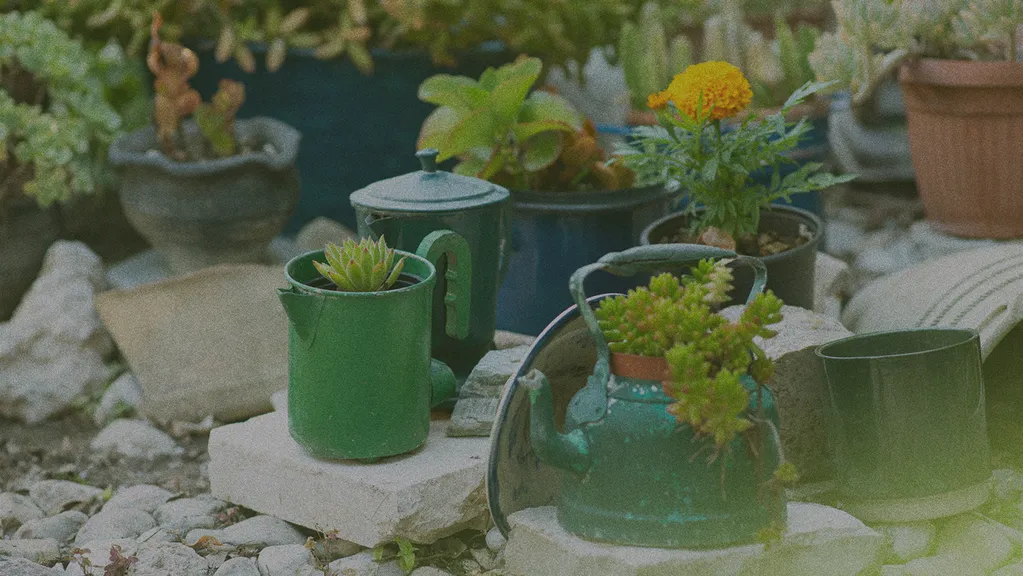Creating a more sustainable lifestyle takes effort, and it starts with small, consistent actions. There are many ways we can live “greener,” and it begins with small, consistent steps, including recycling the right way.
Recycling breaks materials down to create something new, while upcycling keeps the item’s original form and value intact, transforming it into something useful or creative.
Upcycling challenges the way we think about waste. Instead of seeing items or materials as something to throw away, it becomes an opportunity to transform it into something functional, meaningful, or even beautiful.
What Is Upcycling?
Some people refer to upcycling as repurposing, and that’s exactly what it is: finding a new use for old items instead of throwing them away. While the practice of repurposing materials has existed for centuries, today’s upcycling movement is driven by the desire to reduce landfill waste and give old items new life in creative, sustainable ways.
Upcycling can involve any number of materials, products, and techniques, and is a great way to repurpose items that either cannot be recycled, or are damaged but still have usable parts. This environmentally friendly practice keeps us from adding new things to a world that's already overfilled with material goods, and the finished product is often more beautiful and valuable than it was before.
What's the Difference Between Upcycling and Recycling?
A common misconception is that upcycling and recycling mean the same thing, but they are two distinct approaches to dealing with waste. Recycling is the process of collecting materials that would otherwise be trash, processing them down to their base materials, and turning them into new products.
It's a fundamental part of how modern society manages waste and conserves resources, though the process isn’t always straightforward. Some materials, such as certain types of glass, can be recycled without losing quality. Others are more difficult due to contamination risks, mixed materials, or complex processing needs.
Upcycling gives old or unwanted items a new purpose. If you’re creative enough, you can even turn them into something more valuable than they were to begin with. It also supports the shift toward a circular economy, where products are designed with longevity and reuse in mind. Instead of relying on a constant flow of new materials, upcycling encourages us to work with what's already available.
Everyday Items You Can Upcycle
Your imagination is the limit when it comes to upcycling! Because upcycling simply involves reusing a product in ways that add value, nearly any item or material has the potential to be transformed. Upcycling has become so popular that it's easy to find ideas, inspiration, and tutorials for nearly every material imaginable online. Here are some of the most common materials that can be upcycled:
Upcycling Plastic
Plastic is one of the biggest contributors to landfill waste and can take upwards of 1,000 years to break down. Microplastics have been found everywhere in our world, even in the deepest part of the ocean. Because of its durability and wide availability, plastic has also become one of the most commonly upcycled materials. You can use it to create pretty much anything from plant pots and jewelry to storage containers.
Upcycling Furniture
With a bit of vision and effort, you can turn a table or a lamp from your local second-hand store into a one-of-a-kind piece that would cost hundreds or thousands to buy from a retailer. Something as simple as sanding and painting a table can turn an old, battered piece of furniture into the new centerpiece of your living room.
However, not every piece of furniture can—or should—be upcycled. If you have bulky, worn-out items and can’t give them a second life yourself, there are still responsible ways to recycle furniture.
Upcycling Clothes
The fashion industry generates around 92 million tons of textile waste per year. Upcycling slows down that cycle by reducing the demand for virgin materials and keeping textiles out of landfills. Upcycling also reduces the need for water, energy, and chemicals in fabric production, limits emissions from manufacturing and transport, and avoids the waste tied to synthetic blends and complex materials.
In recent years, upcycled fashion has found its way onto high-fashion runways and musical performances. Björk and Lady Gaga have worn upcycled pieces by designers such as Kevin Germanier, who turns discarded materials into stage-ready fashion.
Upcycling Metal
Most metals can be recycled indefinitely without losing strength or quality, which is why they’re great candidates for upcycling. Old metal items, such as shelving, pipes, tools, cookware, and bed frames, can be repurposed into functional pieces. Because metal is structurally strong, it’s especially useful for upcycling that prioritizes durability and utility.
If you're unable to turn something into a lamp, shelf, or something useful, you have the option to recycle your scrap metal and keep it out of the landfill.
Upcycling Glass
While glass is often thought of as easily recyclable, local recycling programs only accept certain types of glass. Items like mirrors, windows, cookware, and glassware contain additives or coatings that make them incompatible with standard recycling processes. Even something as simple as a broken wine glass can contaminate an entire batch of otherwise recyclable material.
Instead of sending unusable glass to the landfill, it’s easier to find a way to reuse it at home. Glass containers can be reused for pantry storage, DIY candle holders, or minimalist flower vases. Larger jars can become countertop compost bins or planters for herbs and succulents. The sky's the limit when it comes to thinking of new ways to repurpose old items.
Takeaways
Upcycling isn't about perfection or elaborate DIY projects; it's about making use of materials that we already have. It’s a mindset shift: seeing used items not as waste, but as resources with potential. While it doesn’t replace recycling, it complements it by filling in the gaps. It also gives us more control. Upcycling allows us to act before items reach the bin and give them a purpose instead of relying entirely on waste systems.


